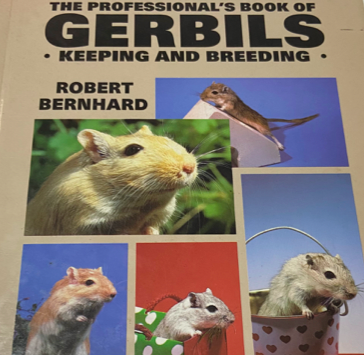One of our most essential traditions at Elasticity involves a culturally significant book about gerbils I acquired some 10 years ago at a 5-and-dime store in Memphis. Upon joining the agency, new Elasticians are given the book – “The Professional’s Book of Gerbils” – and asked to thoroughly digest its content therein.
I have also made frequent request to these same Elasticians that they write reports on the book and, to my surprise, no one has taken me up on it yet – until now.
The newest member of our team is erstwhile copywriter Chase Koeneke (no relation nor mustache similarity to Stan Kroenke, and besides, it’s spelled differently). And when Chase was bequeathed the book of gerbils, not only did he embrace it – but he drank it down with an unquenchable thirst that included penning Elasticity’s first report on the book.

Thus, I now present to you perhaps the greatest blog post to ever grace the pages of GoElastic.com; the analytical words of my first and only favorite Elastician: Mr. Chase Koeneke.
You’re welcome.
_________
How to Speak Gerbil In One Easy Lesson
By Chase Koeneke

“Squee squee squeak, peep peep squee.” Know what this common gerbil phrase means in English? Neither do I because that’s not what I mean when I’m talking about “speaking” gerbil.
Gerbils, as it turns out, don’t really even speak that much to begin with. Other than a few squeaks to let Momma Gerbil know they’re hungry when they’re young, gerbils instead do the bulk of their talking non-verbally. Let’s chat about what some of these communication techniques are and also what they mean.
Thumping
It’s not just for rabbits anymore. Gerbils thump too, and it can mean a couple of different things. The first is to warn fellow gerbils of incoming danger. “Yo Steve, watch out for that snake,” or “Hey Jessica, that dumbass human who paid top dollar for some glorified mice is trying to put you in that plastic ball again.” These are the kinds of phrases that are more efficiently communicated through thumping.
But thumping doesn’t always mean something bad is coming. Sometimes it can mean something else is coming. Yeah, we’re talking hot, steamy gerbil sex now. You see, gerbils do not have the sultry sounds of Marvin Gaye to get them in the mood. Nor can they use this great gerbil pick-up line I just came up with: “Is that a tail between my legs, or am I just happy to see you.” Nope, all those gerbil playas out there need to get in the rhythm and do a little thumping before they get to thumping, if you know what I mean.
There is also this kind of thumping you sometimes see in other small rodents:
Of course, these are hamsters. Gerbils would never be caught dead in a Korean-made car. They are, as we all know, Japanese import tuner purists.
The Gerbil Kiss
You ever see two gerbils playing tonsil hockey? This mutual licking of mouths isn’t foreplay, they’re just saying “hello.” How very French.
Grooming
Gerbils are like cats in that they spend a lot of time washing their faces, bellies and backs. Gerbils are unlike cats in that they won’t plan to murder you every minute of every day. Gerbils also like to to hold their tails with their paws as they clean them up and down with they’re tongues. This is the most envious I’ve ever been of a gerbil.
Happy Hopping
When gerbils are in high spirits, they jump with all four legs and pounce on each other with their forepaws. Some call this boxing, but if you’ve ever seen this display of pugilism in person, you’ll know that this is an incredibly generous phrasing. Consequently, Mike Tyson has never lost a single boxing match to a gerbil.
Fear
If you see a gerbil in an upright posture clenching its forepaws together, that means it’s scared. You see, gerbils are a pious race, and they pray to their rodent gods for safety whenever threatened. All gerbils strictly follow Catholicism after the bloody Gerbil Crusades of the 15th century.
Leave Me Alone
Gerbils are unable to give each other the middle finger, so when annoyed, they instead push the interfering gerbil away with their head. If two gerbils are both pushing at each other, watch out. That “sweet science” shit gets thrown out the window and a cage match is about to ensue [Ed. note: As gerbils are primarily kept in cages, any gerbil confrontation is technically a cage match.]
Marking Territory
Finally, as capitalism has yet to be introduced to the gerbil populace, our furry friends rely on a more rudimentary system of claiming what is theirs. Male gerbils will rub their bellies on whatever they want to declare as their property, leaving a secretion that says “hands off, buddy.” I also subscribe to this ritual, and have performed it upon everything on my desk. I hope you haven’t tried to borrow a pen.
So there you have it. You are now fluent in the gerbil lexicon. It’s sad really: If humans could fully understand each other in the way gerbils do, there would be no war, no hunger, no poverty. But perhaps, armed with this knowledge, we can become the catalyst for change. If we were to come together and lick each other’s faces, I know we would see that there is more that unites us than there is that divides us.



